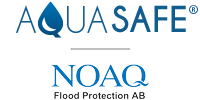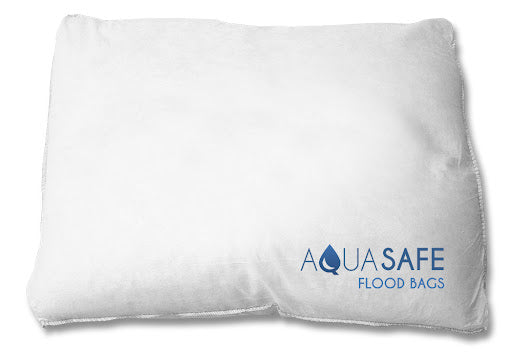How to Use Sandbags for Flooding
Whether you own warehouses, storefronts, or hotels, it is critical to the well-being of your business to adequately protect your facility from flood damage. One common way to do this is through the use of sandbags.
Sandbags have been used for hundreds of years to help limit the damage of flooding or prevent it entirely by diverting water away from a specific area. In some cases, sandbags can be very effective. However, a sandbag is not an easy catch-all flood prevention method. If you plan to use sandbags for your facility, it’s important to know exactly how to use sandbags for flooding.
What Flooding Scenarios Do Sandbags Work Best For?
When used properly, sandbags can be an effective way to protect your facility or home from flooding, but they are not designed for every flooding scenario. Sandbags have certain limitations you must be aware of so that you can supplement or replace your flood prevention method. One major limitation is height — sandbags best work for low-level flooding. If the flood exceeds two feet in height, you will need to use a more permanent structure, such as the NOAQ Boxwall.
Traditional sandbags are built to be sturdy, but they are not waterproof. They will deteriorate over time, and as they do, water will break through the seams. This will lead to an unattractive and ineffective leakage of sand, clay, or whatever materials make up your sandbag. It’s essential to periodically replace sandbags. Timing is also crucial: if the sandbags are placed on the property too early, they may wear down before a flood comes and be less effective when they’re most needed.
Why Traditional Sandbags Fall Short
While traditional sandbags have long been the status quo, they are no longer the most effective option when it comes to handling flooding. Traditional sandbags present several downsides that make them a cumbersome flood control option compared to sandless sandbags.
Issues relating to traditional sandbags include:
- Time-consuming to fill & tie
- Necessary materials to build the sandbags (sand, clay, burlap bags, etc.)
- Heavy & difficult to move (especially when wet)
- Messy when cleaning up post-flood
- Takes up considerable room to store
Sandless sandbags address all these issues with their lightweight, compact design, combined with the unique water-absorbent technology — making it the modern go-to for sandbag use. Sandless sandbags can be used in a variety of flooding events, from heavy rains to busted pipes. Due to their low profile and lightweight nature, these bags can be moved and deployed by almost anyone — and in a quick fashion. Sandless sandbags can be used in the same manner as traditional sandbags without the drawbacks and inefficiencies.
How to (Properly) Build a Sandbag Structure
It takes more than one or two sandless sandbags to deter flood waters. In most cases, you will need to stockpile sandbags to build a wall. To make a wall that effectively keeps out water, hold these steps in mind:
Remove Any Debris from the Area First
If there is debris on the ground, this could wear on the surface of the bag. Make sure the ground is level during this step as well, and remove any roots and weeds. Uneven ground will actually make your sandbag wall unstable and slanted.
Measure How Many Bags You Will Need
To create a sandbag structure that is one foot tall and ten feet long, you will need roughly 50 to 60 sandbags. Measure the length of the wall you need, and plan your bags accordingly.
Building the Sandbag Wall
Begin by laying down the sandbags from end to end in one long line. Once you’ve completed the length of your sandbag structure, lay a new row on top, staggering the ends so that the middle of the bags on the second row are in line with the ends of the bags on the first row. Continue to build until your structure is complete.
A New Era and the Sandless Sandbag
As technology has advanced, so, too, has the sandbag. Today, there are even sandless sandbags, such as the bags offered by Aquasafe. Aquasafe sandless bags are built with sturdy material, but are light and can be stored on a shelf when not in use. When deployed, they are activated by liquid and can absorb up to 50 pounds of water.
Some benefits of sandless sandbags include:
- Easier to store
- Less time and effort spent on assembly
- Longer shelf life
- Versatile uses, such as soaking up leaks and spills
Stock Up On Sandless Sandbags Today
When it comes down to how to use sandbags for flooding, the best answer is to choose sandless sandbags. Buy the modern sandbag, and best protect your business, home, or community today.


